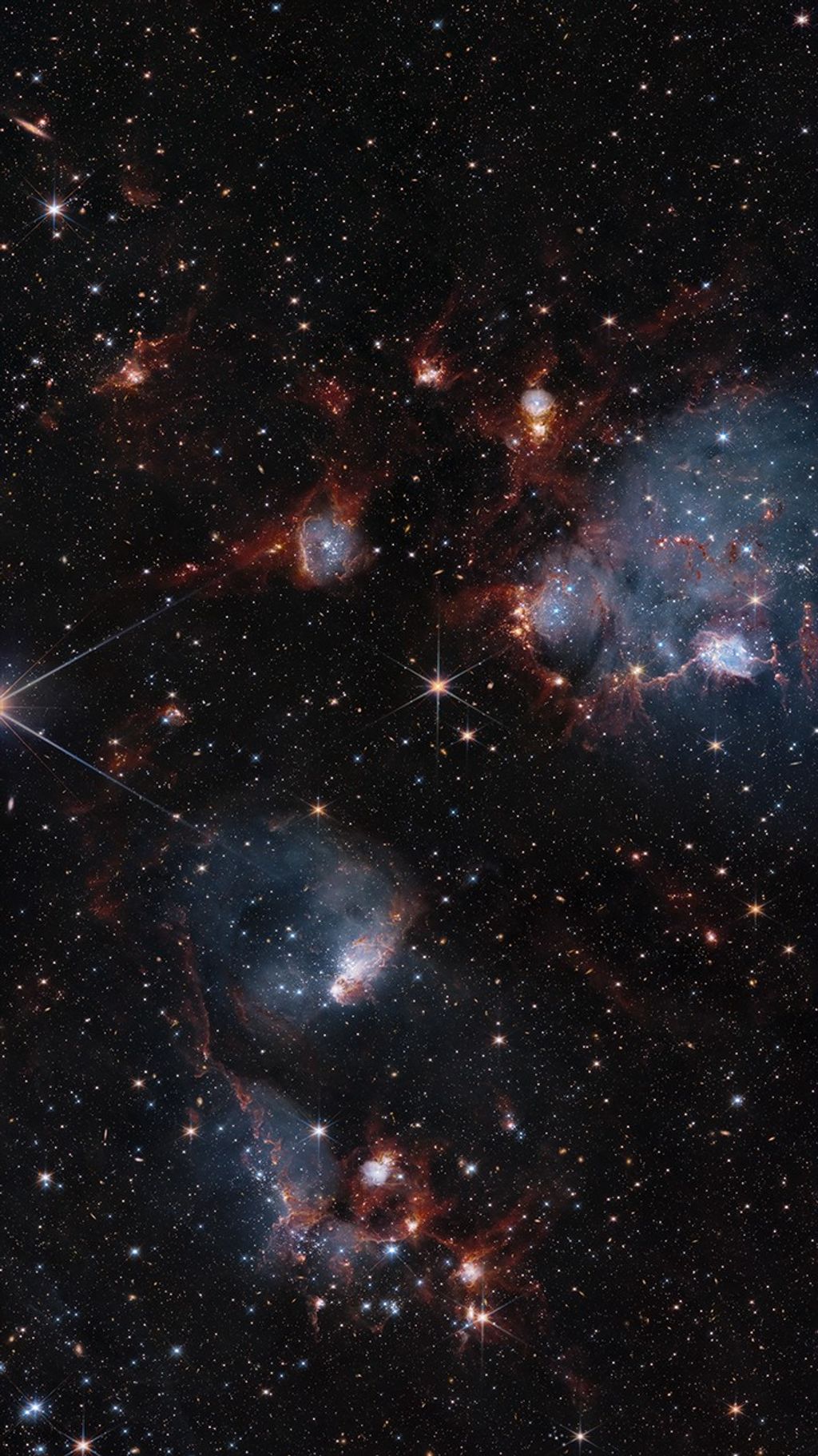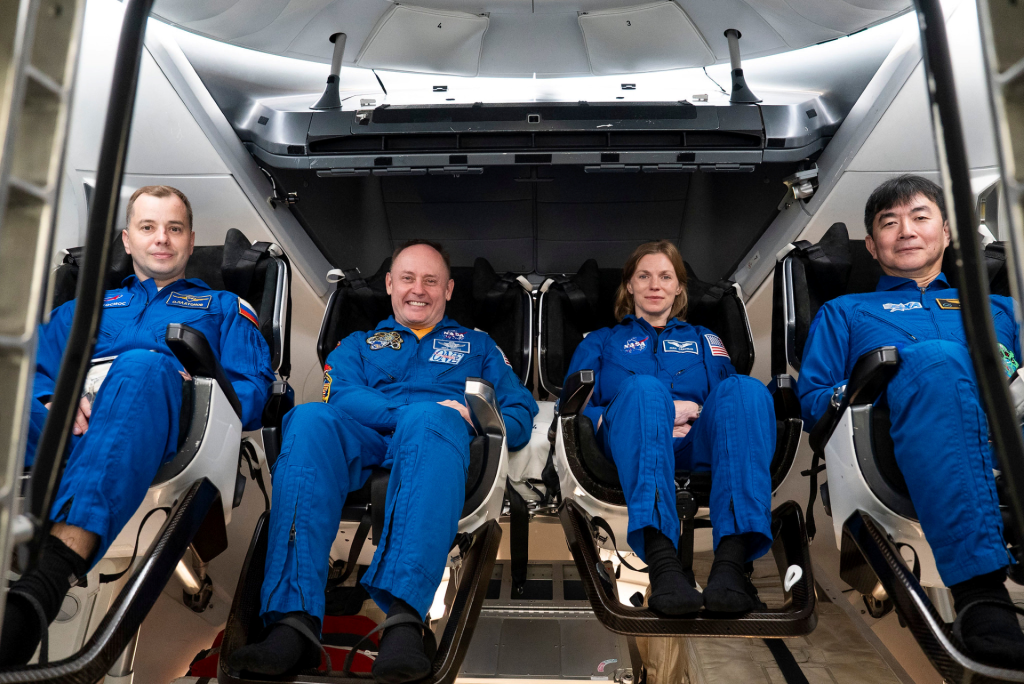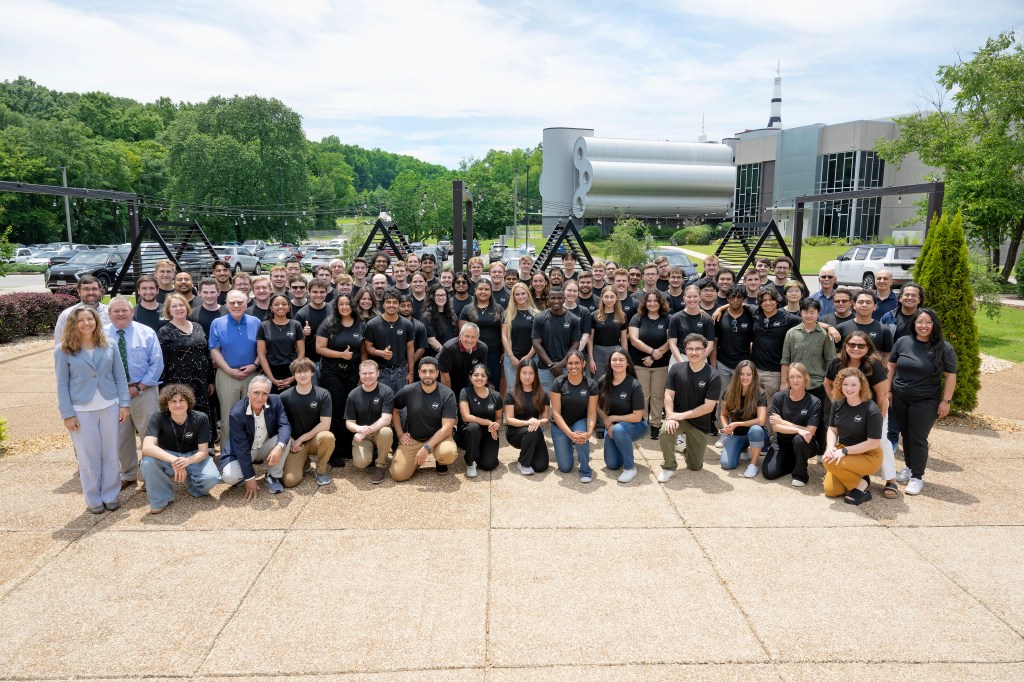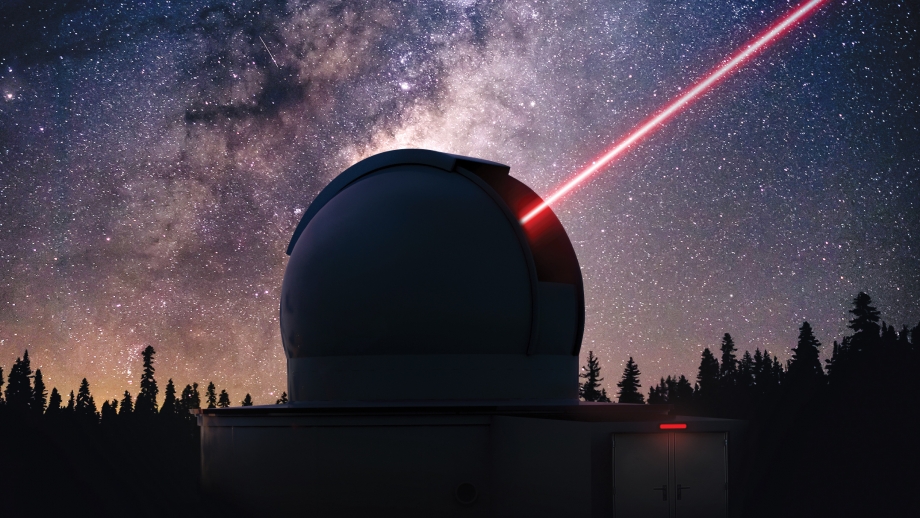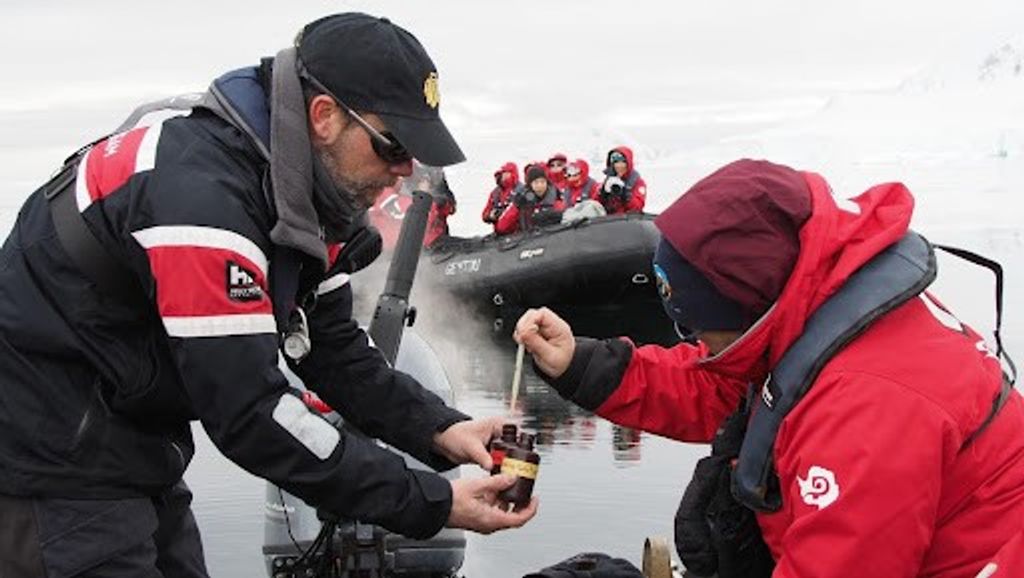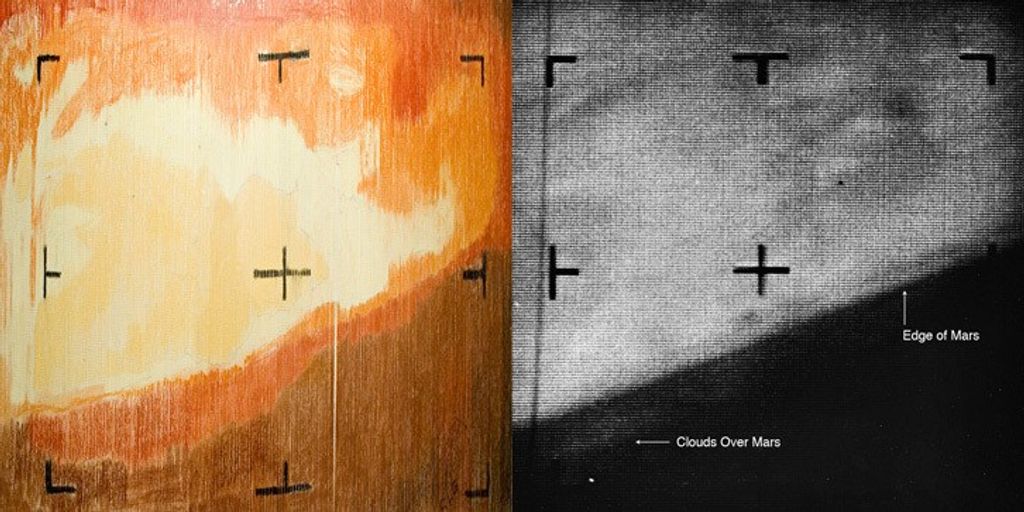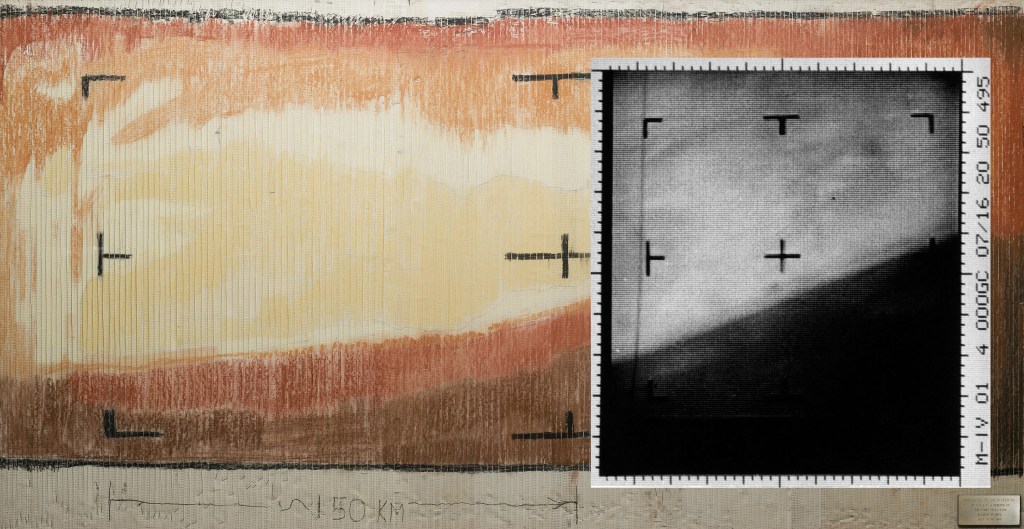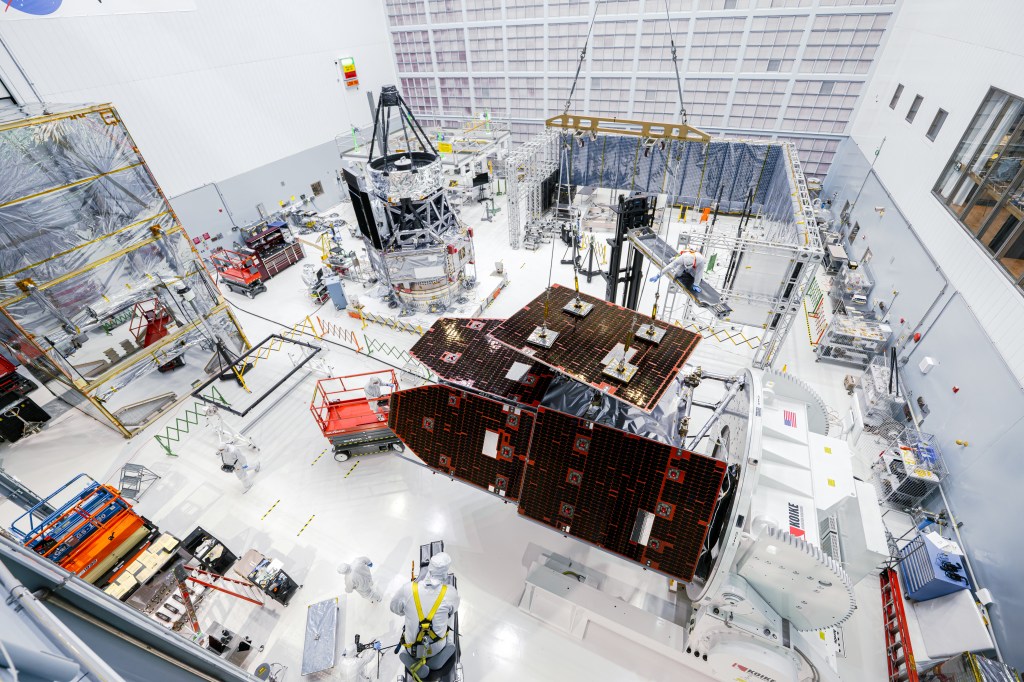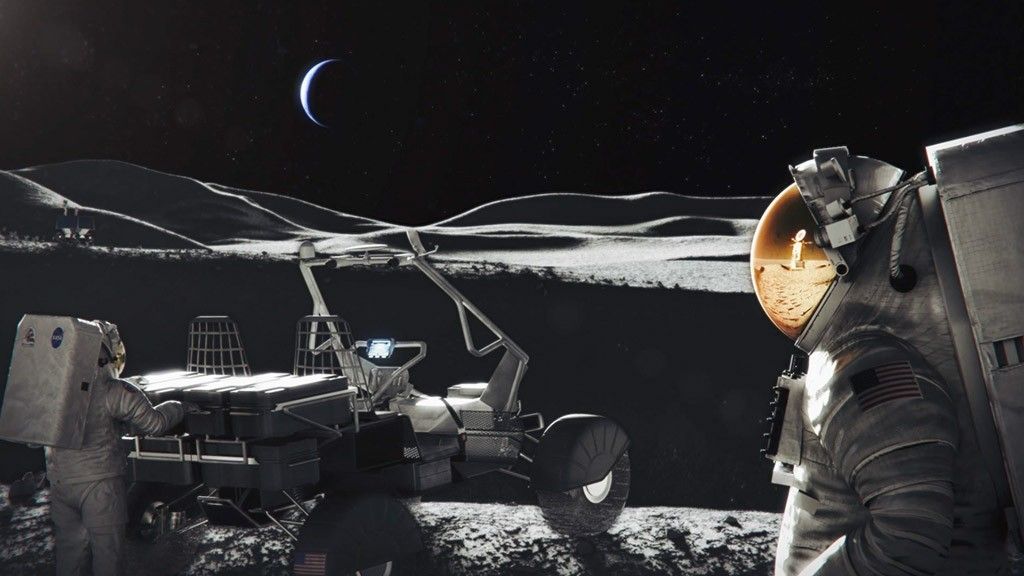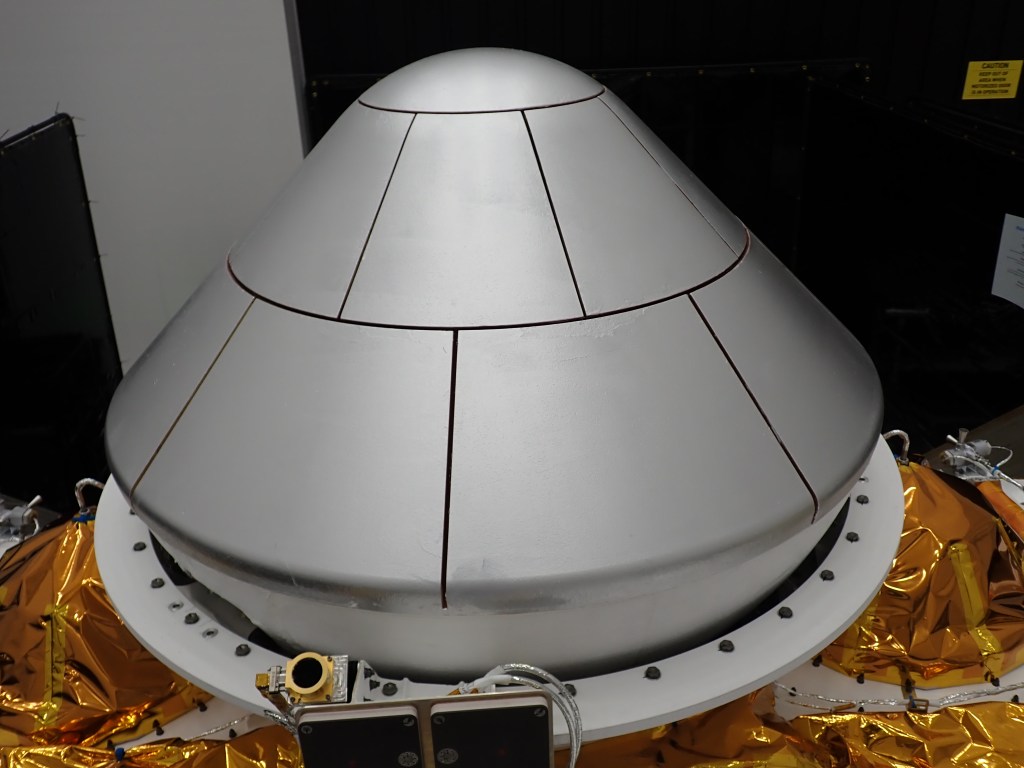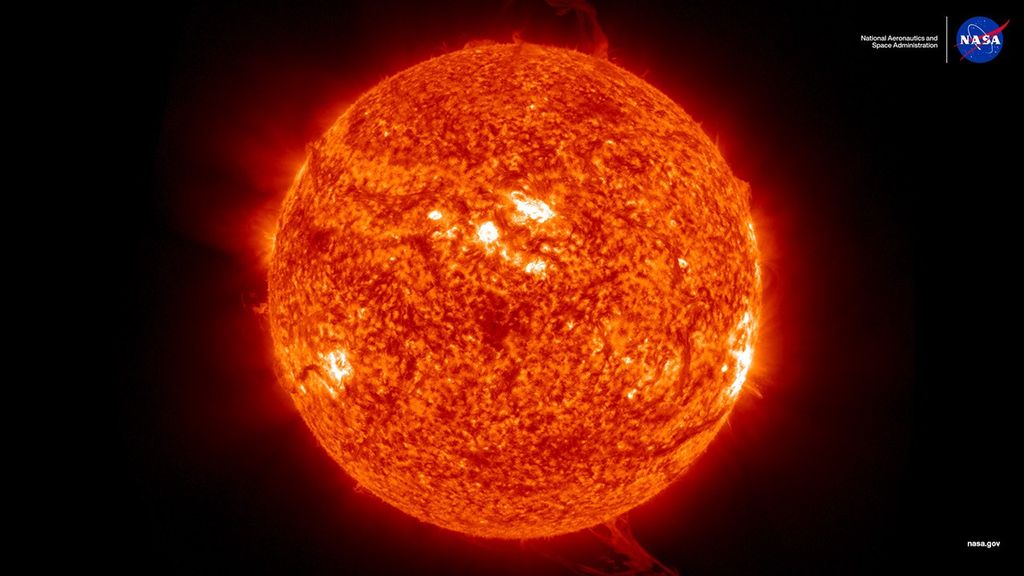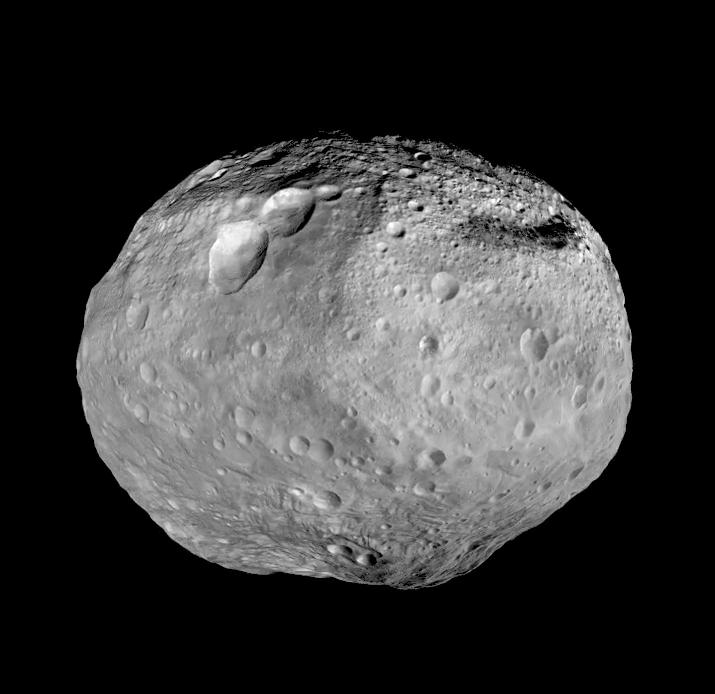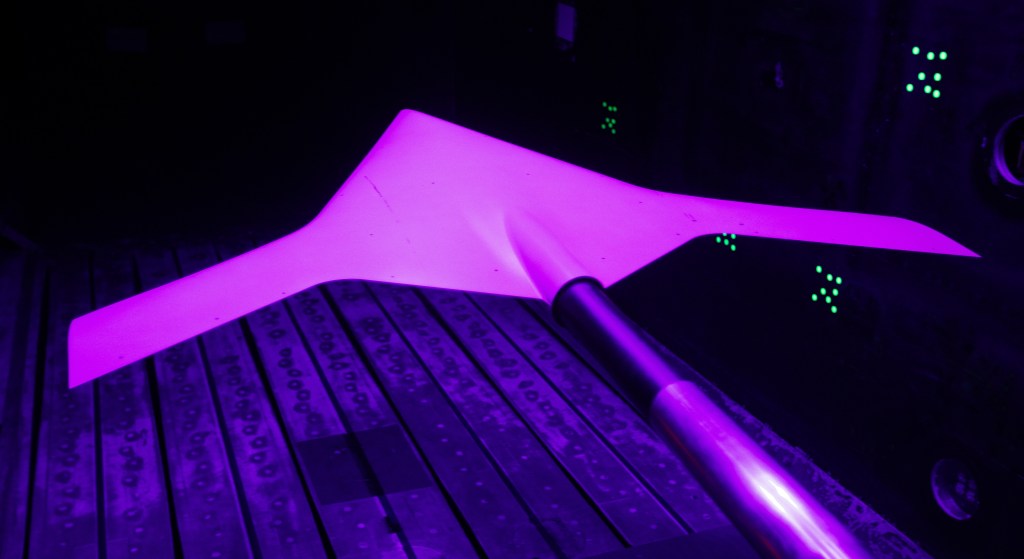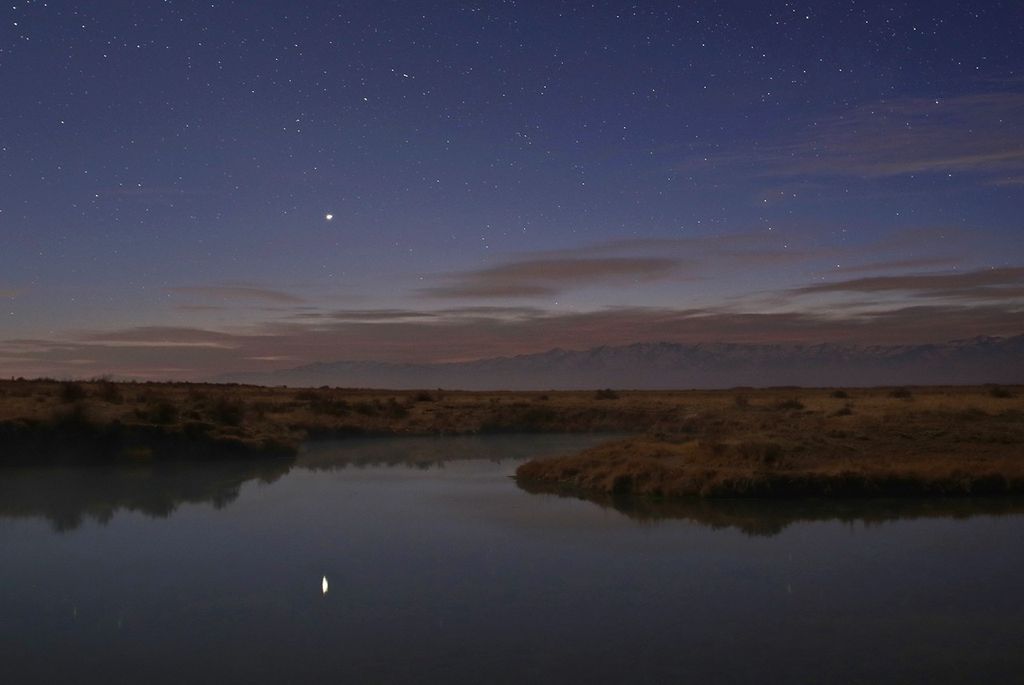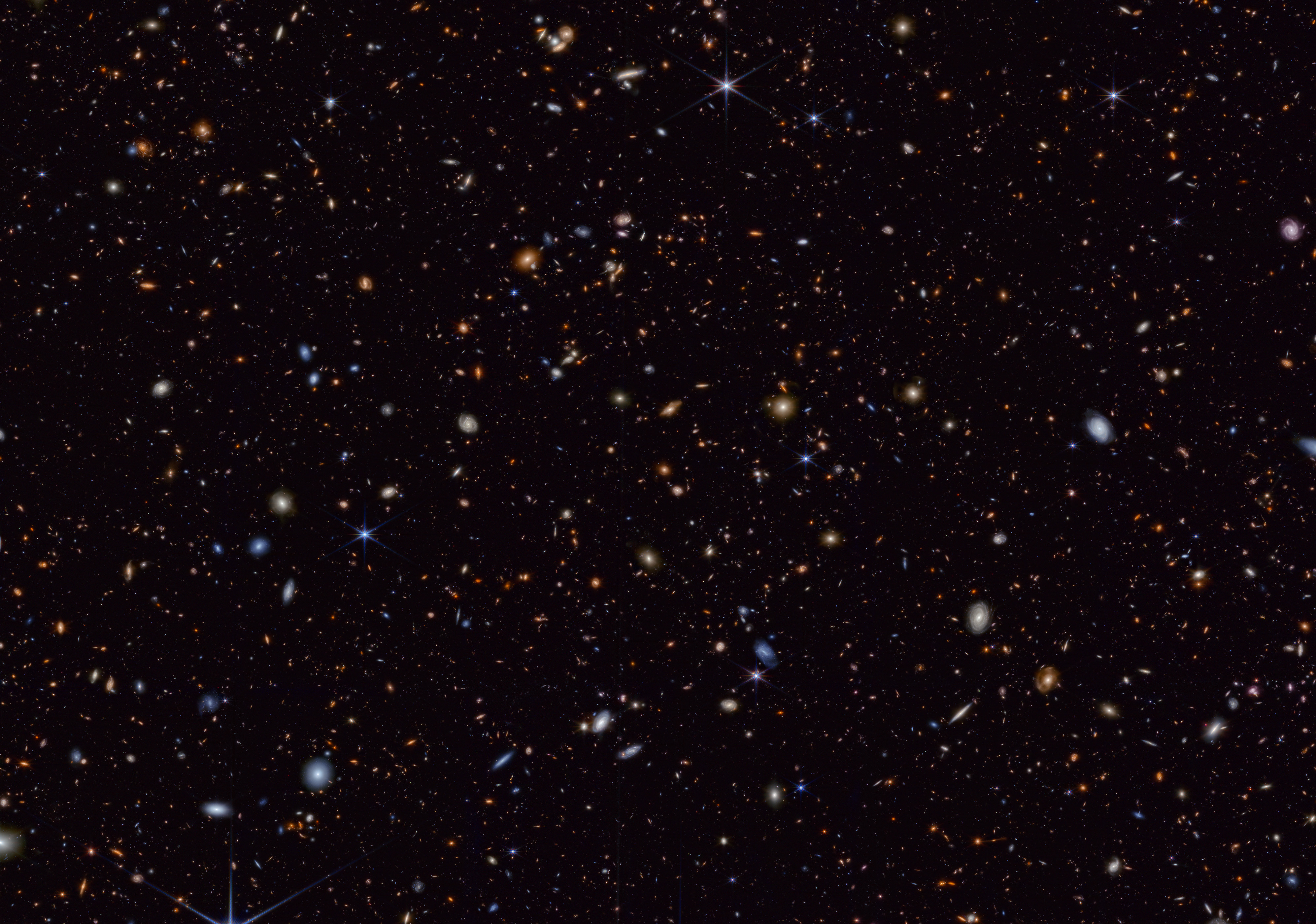ISS Daily Summary Report – 2/17/2022
80 Progress (80P) Docking: Following the completion of a 34-orbit rendezvous, 80P successfully docked to the MRM2 SM Zenith docking port this morning at 01:06 AM CT. The crew then performed leak checks, opened hatches, and began unloading cargo. Carrying food, fuel, and supplies, 80P launched from the Baikonur Cosmodrome on Monday, February 14th, at 10:25 PM CT.
Payloads:
EarthKAM (Sally Ride Earth Knowledge Acquired by Middle Schools): The initial 50mm camera lens was exchanged for an 85mm lens on the EarthKAM D2XS camera. This is a nominal part of the week-long EarthKAM mission and enables different targets to be captured effectively. EarthKAM allows thousands of students to photograph and examine Earth from a space crew’s perspective. Using the Internet, the students control a special digital camera mounted on-board the ISS. This enables them to photograph the Earth’s coastlines, mountain ranges, and other geographic items of interest from the unique vantage point of space. The EarthKAM team then posts these photographs on the Internet for viewing by the public and participating classrooms around the world.
JEM Microbe: The JEM Microbe Sensor was removed from the JPM1D1 and stowed. These sensors are nominally deployed at a location for 4 months to gather data. Space habitation is a simple ecosystem that mainly consists of humans and microbes, and in the near future, plants. Microbes play important roles for the material cycles and human health but sometimes cause hazardous infectious diseases. The Evaluation of Indoor Microbial Environment in JEM, Kibo Japanese Experiment Module (JEM Microbe) investigation’s continuous microbiological monitoring provides greater insight on changes in microbial community structure during prolonged space habitation to reduce potential hazards for the crew and the infrastructure.
Rodent Research-18 (RR-18): The RR-18 experiment continued today with activities including a habitat swap and acoustic monitoring. Astronauts returning from space can experience eye problems along with headaches and blurred vision. Scientists suspect environmental conditions during spaceflight lead to oxidative stress that adversely affects the eye structure and function. Space Flight Environment Induces Remodeling of Vascular Network and Glia-vascular Communication in Mouse Retina (Rodent Research-18) investigates how spaceflight affects visual function, examining changes in the vascular system of the retina, tissue remodeling, and cell-cell interactions in mice.
Touching Surfaces: The crew performed a periodic touching of the Touch Arrays which are deployed in five different locations in the US segment of ISS. Previous space research conducted during short-term flight experiments and long-term environmental monitoring onboard orbiting space stations (such as MIR or the ISS) suggests that the relationship between humans and microbes is altered in the crewed habitat in space. This interdisciplinary project Touching Surfaces aims to investigate novel, laser-structured antimicrobial surfaces onboard the ISS. The realistic testing of the tailor-made nanostructured antimicrobial surface in space allows for the determination of the most suitable design for antimicrobial surfaces for terrestrial applications such as public transportation and clinical settings, as well as future human space mission and habitation design.
Veggie Passive Orbital Nutrient Delivery System (PONDS): The crew inspected the three remaining PONDS modules with growing plants, took photos, and added water to them as needed. This is not unexpected since the experiment uses several designs of the PONDS modules to determine which is best for sustaining plant growth. Organisms grow differently in space, from single-celled bacteria to plants and humans. Future long-duration space missions will require crew members to grow their own food; therefore, understanding how plants respond to microgravity and demonstrating the reliable vegetable production on orbit are important steps toward that goal. Veggie PONDS uses a newly developed passive nutrient delivery system and the Veggie plant growth facility aboard the ISS to cultivate Romaine lettuce and Mizuna mustard greens, which are to be harvested on-orbit and consumed, with samples returned.
Systems:
Treadmill 2 (T2) Activation and Checkout (ACO): Today, the crew performed a crewed Activation and Checkout, which was the final activity for T2 maintenance. An ACO allows the crew and ground to reactivate hardware and perform systems checks to ensure all components are performing nominally before the hardware can be cleared for operational use. The crew noted the X-Axis Isolator Cover was not installed and that the X-Axis Isolators may be damaged. T2 remains no-go for crew exercise while ground teams continue to assess a forward plan.
Regenerative Environmental Control and Life Support System (ECLSS) Recycle Tank Drain/Fill: The recycle tank was set up to drain via the Urine Processor Assembly (UPA) Fill Drain Valve into a Brine EDV using the Urine Transfer System (UTS). Following the setup, the ground performed the tank drain using the UTS. Once the ground specialists completed the transfer, the crew verified the recycle tank was empty, terminated the drain, repositioned the fill/drain valve to force fill the recycle tank using UTS, and configured for nominal processing operations. The crew also swapped the EDV in the offload EDV spot of the UTS.
Cygnus Onboard Trainings (OBTs): The crew conducted two OBTs for the upcoming Cygnus (NG-17) mission. First, two crewmembers assigned to NG-17 capture operations practiced offset grapples on the Permanent Multipurpose Module (PMM) Flight Releasable Grapple Fixture (FRGF). With the Space Station Remote Manipulator System (SSRMS) purposefully misaligned within tolerances and positioned at the PMM FRGF High Hover position, the two crewmembers took turns using the Cupola Robotic Workstation (RWS) to perform as many grapple approaches as desired. The two also used the time to determine how they would manage the volumetric constraints of the Cupola and understand the lighting conditions during SSRMS maneuvering. Next, the crew reviewed material for the Attached Phase Operations for the vehicle. The review provided the crew with an overview of the vehicle’s hardware, stowage, and attached phase configuration.
Eye Exams: The crew completed routine Optical Coherence Tomography 2 (OCT-2) eye exams. OCT is an imaging technique analogous to ultrasound imaging that uses light instead of sound to capture micrometer-resolution, two- and three-dimensional images of tissue; in this case, the objects of interest are the crewmembers’ eyes. Eye exams are performed regularly onboard to monitor crewmembers’ eye health. Eyesight is one of the many aspects of the human body that may be affected by long-duration stays in a microgravity environment.
Dragon / LAB Station Support Computer (SSC) Swap: SSCs are the laptops associated with non-command activities onboard the ISS. Today, the crew moved SSC 20 from Dragon to LAB and moved SSC 10 from LAB to Dragon. SSCs are swapped regularly to ensure that International Procedures Viewer (IPV) backups are applied to SSCs remaining in Dragon for emergency situations.
Completed Task List Activities:
- None
Today’s Ground Activities:
All activities are complete unless otherwise noted.
- Space Station Remote Manipulator System (SSRMS) Maneuvers
- Mobile Servicing Station (MSS) Hot Backup Configuration and Deconfiguration
- Regenerative Environmental Control and Life Support System (ECLSS) Recycle Tank Drain Support
- 80 Progress (80P) Docking Support
Look Ahead Plan
Friday, February 18 (GMT 49)
Payloads:
- Astrobee Off
- EasyMotion/T2
- EXPRESS Bulb Replace
- LIDAL Return 2
- Mochii
- MSPR/JWRS Closeout
- MVP Plant-01 Photo
- Plasma Kristall-4
- Rodent Research-18 Access Unit Clean
- Sansori
- SQuARE
- Tangolab
- Wireless Compose-2 T/S
Systems:
- Extravehicular Activity (EVA) #2 Procedure Review
- Extravehicular Activity (EVA) Helmet Light Installation
- Extravehicular Mobility Unit (EMU) Don-Doff Assembly (EDDA) Troubleshooting (T/S)
- Cygnus Onboard Training (OBT) Robotics Onboard Trainer (ROBoT) Session 2
- Configuration of both LAB CCAAs for Dual Operations
Saturday, February 19 (GMT 50)
Payloads:
- EasyMotion Stow
- MVP Plant-01 Photos
- Plasma Kristall-4
- SQuARE
Systems:
- Crew Off-Duty
Sunday, February 20 (GMT 51)
Payloads:
- EasyMotion
- MVP Plant-01 Photos
- Veggie PONDS
- SQuARE
Systems:
- Crew Off-Duty
Today’s Planned Activities:
All activities are complete unless otherwise noted.
- Sidekick (HoloLens) Gather and Charge
- Veggie Ponds Reservoir Fill & Photos
- Photo/TV Treadmill 2 (T2) Activation & Checkout (ACO) Video Setup and Stow
- Health Maintenance System (HMS) ISS Food Intake Tracker (ISS FIT)
- Regenerative Environmental Control and Life Support System (ECLSS) Urine Processor Assembly (UPA) Brine Filter Changeout
- Treadmill 2 (T2) Activation and Checkout (ACO)
- Regenerative Environmental Control and Life Support System (ECLSS) Recycle Tank Drain/Fill
- Touching Event for the Touching Surfaces Experiment
- Japanese Experiment Module (JEM) Microbe Sensor Removal
- Robotic Workstation (RWS) Setup
- PL Cntl Box Closeout after IPU2 Extra Checkout
- ISS HAM Kenwood Radio Power Up
- Rodent Research Habitat Restock
- Life Sciences Glovebox (LSG) Front Glove Swap and Operations
- Vestibule Outfitting Kit Equipment Gather
- Systems Operations Data File (SODF) Update
- Dragon / LAB Station Support Computer (SSC) 10 and 20 Swap
- Virtual Reality (VR) Onboard Training (OBT) Data Retrieval
- Japanese Experiment Module (JEM) Wireless Instrumentation System Environmental (WIS) Monitor Remote Sensor Unit (RSU) Battery Remove and Replace (R&R)
- SQuARES Fixed Daily Imagery
- Urine Transfer System Offload EDV Swap
- Actiwatch Plus HRF Rack 1 Alternate Performance Setup and Stow
- Cygnus Onboard Training (OBT) Offset Grapple
- Countermeasures System (CMS) Heart Rate Monitor (HRM) Cable Taping
- Contingency Water Container – Iodinated (CWC-I) Inspection
- Stowage Management Cleanup Part 1
- Astrobee Stowage Replace
- Microgravity Science Glovebox Activation
- Cygnus Onboard Training (OBT) Attached Phase Operations Review
- Sidekick (HoloLens) Onboard Training (OBT)
- Solid Waste Container (KTO) Lid Find
- Health Maintenance System (HMS) Optical Coherence Tomography 2 (OCT-2) Exams

